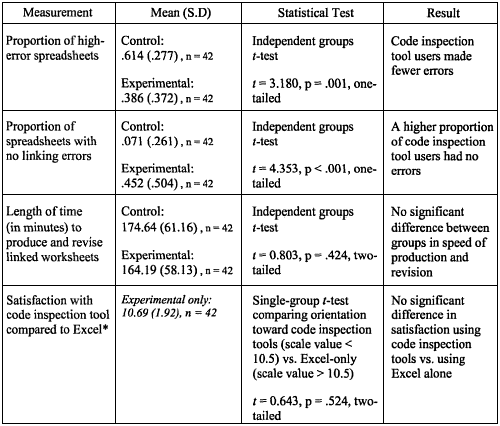Authors
Mike Morrison, Joline Morrison, John Melrose, & E. Vance Wilson
Abstract
Spreadsheet programs are deceptively simple tools that are widely used by end-user developers and organizations. However, recent studies have shown that spreadsheets often contain significant, decision-affecting errors.
This paper describes the code inspection approach that visually represents the structure of a linked spreadsheet and graphically identifies linked cells and their sources. This approach was tested in an experimental study where subjects created a complex spreadsheet.
Results indicate that subjects who used the approach made significantly fewer errors and experienced no decrease in speed of spreadsheet production or satisfaction with the production process.
Sample

Results of the experimental hypotheses:
- Hypothesis 1 predicts improved accuracy of code inspection tool users. The tool users had a significantly lower proportion of errors and a higher proportion of spreadsheets with no errors.
- Hypothesis 2 predicts that speed will not be adversely affected by using the visual code inspection approach. Subjects using the code inspection tools were 6% faster than those who used Excel only.
- Hypothesis 3 predicts that using the code inspection tool will not decrease satisfaction with the spreadsheet production process. Satisfaction orientation was biased toward Excel, but the effect was small and non-significant.
Publication
2002, Journal of Organizational and End User Computing, Volume 14, Number 3, July-September, pages 51-63
Full article
A visual code inspection approach to reduce spreadsheet linking errors
